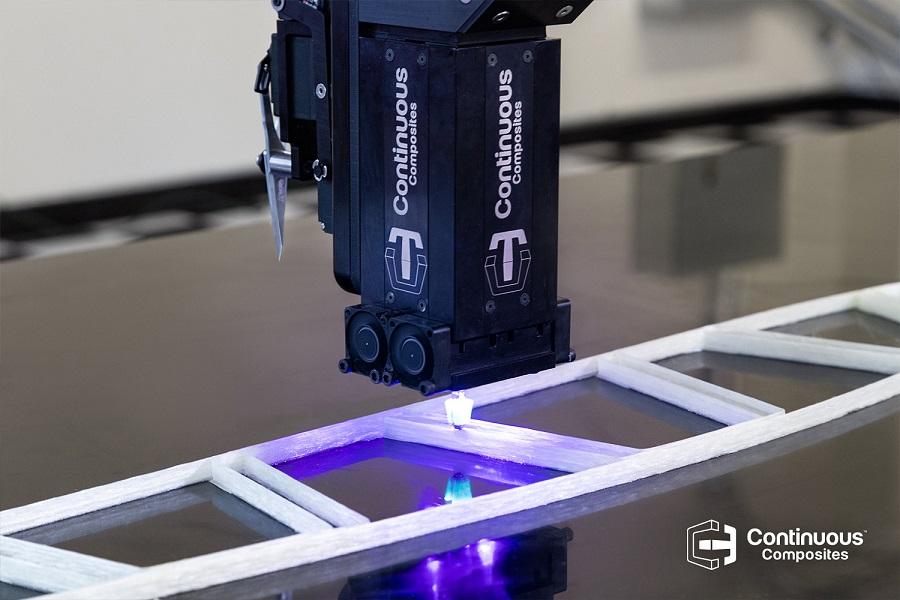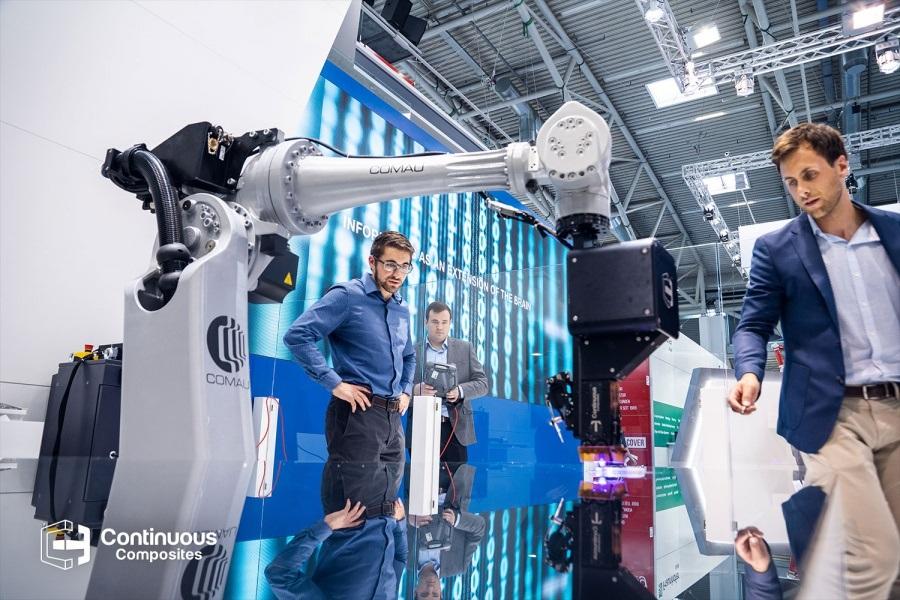Editor-in-Chief
- FMA
- The Fabricator
- FABTECH
- Canadian Metalworking
Our Publications
Categories
- Additive Manufacturing
- Aluminum Welding
- Arc Welding
- Assembly and Joining
- Automation and Robotics
- Bending and Forming
- Consumables
- Cutting and Weld Prep
- Electric Vehicles
- En Español
- Finishing
- Hydroforming
- Laser Cutting
- Laser Welding
- Machining
- Manufacturing Software
- Materials Handling
- Metals/Materials
- Oxyfuel Cutting
- Plasma Cutting
- Power Tools
- Punching and Other Holemaking
- Roll Forming
- Safety
- Sawing
- Shearing
- Shop Management
- Testing and Measuring
- Tube and Pipe Fabrication
- Tube and Pipe Production
- Waterjet Cutting
Industry Directory
Webcasts
Podcasts
FAB 40
Advertise
Subscribe
Account Login
Search
U.S. company wins award at European composites show for innovative 3D printing technology
JEC World 2019 presents Innovation Awards to ‘outstanding’ additive manufacturing projects
- By Don Nelson
- March 12, 2019
- Article
- Additive Manufacturing
For 15 years the organizer of JEC World, the world’s largest composites exhibition and conference, has recognized organizations that have developed “outstanding” products and technologies.
At the 2019 installment of the exhibition, held March 12-14 in Paris, organizer JEC Group presented Innovation Awards to 10 companies representing 10 different categories. Thirty finalists selected from more than 100 nominees competed for the awards.
Three companies were chosen as finalists for their work in 3D printing, a new category in 2019. The winner was Continuous Composites, Couer d’Alene, Idaho. Other finalists were CEAD Group, Delft, The Netherlands, and CompoTech PLUS, Sušice, Czech Republic.
Here’s an overview of each 3D printing finalist’s technology:
Resins, fibers, AM, and robots brought together to print moldless composite structures
Continuous Composites’ CF3D™ printing technology combines rapid-curing thermoset resins with continuous fibers, additive manufacturing, and advanced robotics to create a moldless, out-of-autoclave method for manufacturing composite structures.
With CF3D (continuous-fiber 3D) printing, fiber is impregnated inside the deposition head and cures immediately upon exiting the head. (This allows a fiber to travel through air and “connect” one solid object to another, like a spider spins a web.) The CF3D process orients fibers to optimize their strength, allowing the construction of complex structures without molds or other support materials.
The benefits of the process, says the company, includes on-the-fly design changes and eliminating expensive capital equipment and costly retooling.
Additionally, metallic wires and fiber optics can be embedded in a 3D-printed composite structure. This allows an object made from the composite to sense and collect data, power electronics, and monitor activities in real time.
CF3D currently prints composites from carbon fiber, fiberglass, Kevlar, fiber optics, copper wire, and Nichrome wire.

With Continuous Composites’ CF3D printing process, fiber is impregnated inside the deposition head and cures immediately upon exiting the head.
Large components grow from small granules and fibers
CEAD’s new CFAM Prime 3D printer combines extruded granules with pre-impregnated fiber filaments to print large, fiber-reinforced thermoplastic components, such as ship gangplanks and train parts.
Incorporating a patented extruder, the CFAM printer can process most thermoplastics (maximum temperature 400° C), including PETG, PP, PPS, ABS, PC, PB, and PEEK.
A patented process, the CFAM printing head combines melted thermoplastics with continuously fed, pre-impregnated fibers to produce the composite material.
CEAD says the printer builds large, complex shapes quickly. It prints parts measuring up to 4m by 2m by 1.5m that have internal channels and complex mounting and assembly features. Average throughput for continuous-glass or carbon-fiber materials is 15 kg/hr. The machine runs up to 24 hours unattended, is fully enclosed, and features a dedicated cooling system.
3D-printed beams stiffen thin-walled machine structures
CompoTech PLUS uses AM to improve the static and dynamic properties of the composite beams it manufactures. The use of 3D printing reduces costs and allows for lighter, stiffer designs, says the company, which is especially desirable for complex beam sections and other parts produced for machine tools and automation equipment.
Composite structures for these systems are thin-walled, filament-wound carbon laminates with axially placed graphite fibers. They tend to experience wall instability under shear and buckling conditions.
To remedy this, CompoTech adopted a topology-optimization approach for defining the distribution and cross-sections of a lattice-like internal beam structure. Once optimized, the output of nonuniformly distributed modular lattice elements are automatically exported for 3D printing. The structures are 3D-printed by depositing layers of ABS plastic.
The winners of the JEC World 2019 awards were announced at the show on March 13.
About the Author

Don Nelson
2135 Point Blvd.
Elgin, IL 60123
(815)-227-8248
About the Publication
- Podcasting
- Podcast:
- The Fabricator Podcast
- Published:
- 04/16/2024
- Running Time:
- 63:29
In this episode of The Fabricator Podcast, Caleb Chamberlain, co-founder and CEO of OSH Cut, discusses his company’s...
- Trending Articles
- Industry Events
16th Annual Safety Conference
- April 30 - May 1, 2024
- Elgin,
Pipe and Tube Conference
- May 21 - 22, 2024
- Omaha, NE
World-Class Roll Forming Workshop
- June 5 - 6, 2024
- Louisville, KY
Advanced Laser Application Workshop
- June 25 - 27, 2024
- Novi, MI



























